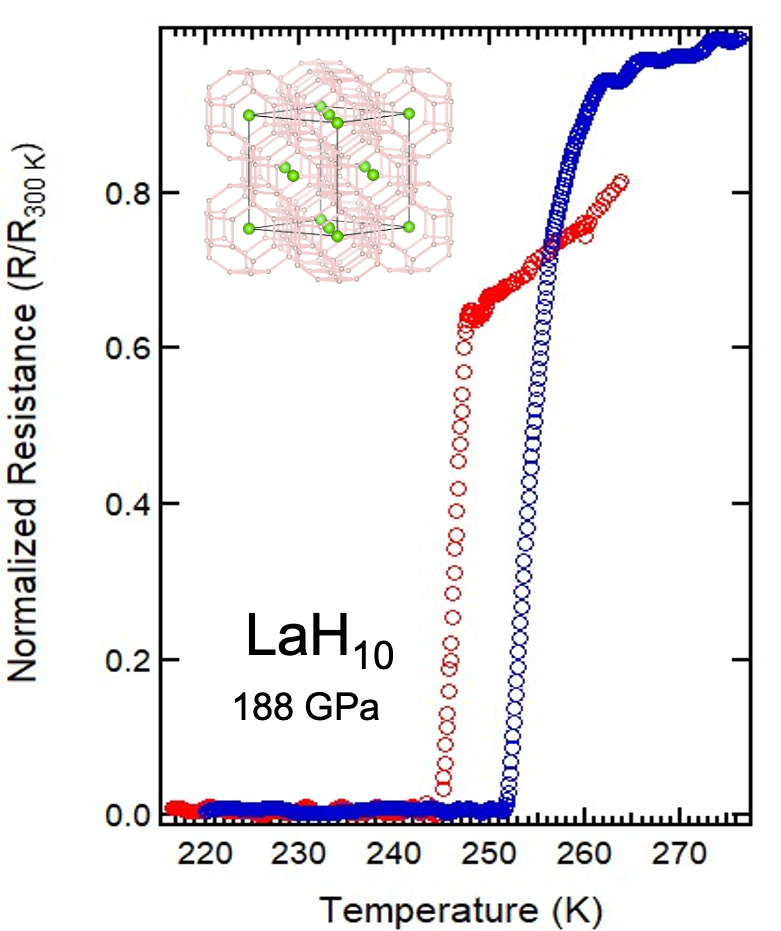7. Superconductivity and Electronic and Magnetic Phenomena
7. Superconductivity and Electronic and Magnetic Phenomena Heading link

Superconductivity and Electronic and Magnetic Phenomena encompasses a variety of experimental and theoretical investigations into the remarkable changes in condensed matter in materials associated with increasing pressure, leading to novel materials and phenomena such as near-room temperature superconductivity, which was first observed by CDAC scientists in 2018 [1]. Considerable progress has been made recently in this area of research, including both experimental studies of novel hydrides using synchrotron x-ray diffraction and infrared spectroscopy, as well as a variety of theoretical studies. In a collaboration with the University of Texas at Dallas, hole-doping by carbon was identified as responsible for the newly discovered room-temperature superconductivity observed in carbonaceous sulfur hydride [2]. The equation of state of the material has now been determined using single-crystal x-ray diffraction to 180 GPa at HPCAT in a multi-laboratory collaboration led by UIC [3]. Theoretical studies of new superconductors include CDAC particpation in the collaborative prediction of an alkali metal borosilicide that is metastable and superconducting at 1 atm [4]. At FIS, CDAC-supported studies of novel magnetic and electronic materials include numerous investigations by CDAC collaborator Janice Musfelt (University of Tennessee) and her students using high-pressure synchrotron IR spectroscopy [5-7]. Activities in this area also include the UIC-led development and further refinement of diamond-anvil cells for measurements at multimegabar pressures in high magnetic fields in collaboration with a team at the NHMFL and former CDAC partner Yogesh Vohra [8-9]. Recently, a new mechanism for creating relatively high temperature superconductivity through the formation of stress-induced planar defects under pressure has been discovered in WB2 [10].
[1] M. Somayazulu et al., Phys. Rev. Lett 122, 027001 (2019); [2] Y. Ge et al., Mater. Today Phys. 15, 100330 (2020); [3] A. Lamichhane et al., J. Chem. Phys. 155, 114703 (2021); [4] X. Cui et al., J. Phys. Chem. C 124, 14826-14831 (2020); [5] Q. Chen et al., Phys. Rev. Mater. 4, 064409 (2020); [6] N. Harms et al., NPJ Quantum Mater. 5, 56 (2020); [7] A. Clune et al., Inorg. Chem. 59, 10083-10090 (2020)]; [8] A. D. Grockowiak et al., arXiv:2006.03004; [9] M. Ahart et al., Manuscript in preparation; [10] J. Lim et al., arXiv:2109.11521.